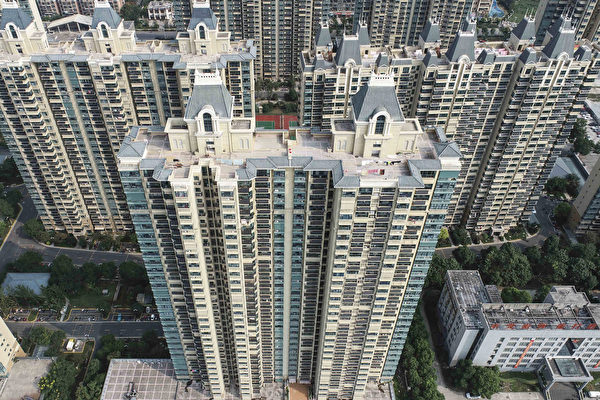China’s real estate market continues to struggle as the latest data shows that prices of second-hand homes in 100 cities have been falling for 29 consecutive months, with all 100 cities experiencing declines for the past 6 months. It is reported that after the bursting of the real estate bubble, there are around 90 million vacant housing units left, coupled with a continuous decrease in China’s population, resulting in a persistent oversupply issue in the housing market that proves difficult to resolve.
On October 1st, the China Index Research Institute released the “Hundred-City Price Index Report,” indicating that prices of second-hand residential properties in the 100 cities continued to decline, marking a 29-month consecutive decrease. While the prices of new homes have seen a slight increase due to the introduction of quality improvement projects in some cities, the actual transactions have been weakening, with the sales of new homes in key cities experiencing month-on-month and year-on-year declines in September.
Data reveals that in September, the average price of second-hand homes in the 100 cities stood at 14,447 yuan per square meter, representing a 0.70% monthly decrease and a 7.13% year-on-year decline. Meanwhile, the average price of new residential properties in the 100 cities was 16,484 yuan per square meter, showing a 0.14% monthly increase and a 1.85% year-on-year increase.
Analyzing the number of cities experiencing price increases or decreases, the China Real Estate Index System’s data shows that in September, 100 cities witnessed a decline in second-hand home prices for the 6th consecutive month, with 100 cities seeing a collective downward trend.
In September, 63 cities experienced a drop in prices of new residential properties compared to the previous month, an increase of 17 cities from August; while 17 cities observed price increases, a decrease of 18 cities from the previous month.
Looking at the first three quarters of this year, according to the China Real Estate Index System, the cumulative price decline of second-hand residential properties in 100 cities amounted to 5.67%, which is 3.65% higher than the same period in 2023. Specifically, the price decline was 1.48%, 2.16%, and 2.13% in the first, second, and third quarters, respectively.
Further breakdown reveals that across different city tiers, the price declines of second-hand homes in various city tiers during the first three quarters were higher compared to the same period last year.
In first-tier cities, the cumulative price decline of second-hand homes was 5.78%, marking a 5.72% larger decline than the previous year; second-tier cities saw a 5.77% decrease, which is 3.50% more than the last year; and third and fourth-tier representative cities experienced a 5.51% decline, showing a 3.01% larger decrease than the previous year, with cities like Changzhou and Yangzhou seeing cumulative declines of over 10%.
On October 1st, the China Index Research Institute revealed the TOP 100 ranking of national real estate companies’ land acquisitions from January to September, with a total of 532.4 billion yuan in land acquisitions, reflecting a 38.1% year-on-year decrease. However, this decrease narrowed by 1.9 percentage points compared to the period from January to August, driven by the impact of a lower base figure from the previous year.
The Wall Street Journal reported on October 1st that economists estimate there could be as many as 90 million vacant homes in China. With the burst of the real estate bubble and a declining population, many cities are facing difficulties as there may never be enough people to fill these housing units.
Even with a continuous decrease in China’s population, filling these vacant homes remains a significant challenge. Due to China’s one-child policy, it is projected that the country’s population will decrease by 204 million over the next 30 years.
Based on official data released by the Chinese Communist Party, the Wall Street Journal calculated that from 2020 to 2023, at least 60% of the population in third, fourth, and fifth-tier cities has decreased. Kenneth Rogoff, an economics professor at Harvard University, pointed out that these smaller cities possess over 60% of China’s existing housing stock.
Huang Tianlei, a researcher at the Peterson Institute for International Economics, emphasized that the fundamental issue lies in the lack of occupants for these houses.
With the economy facing a downturn, the urgent need to address the surplus of real estate properties becomes increasingly pressing.

